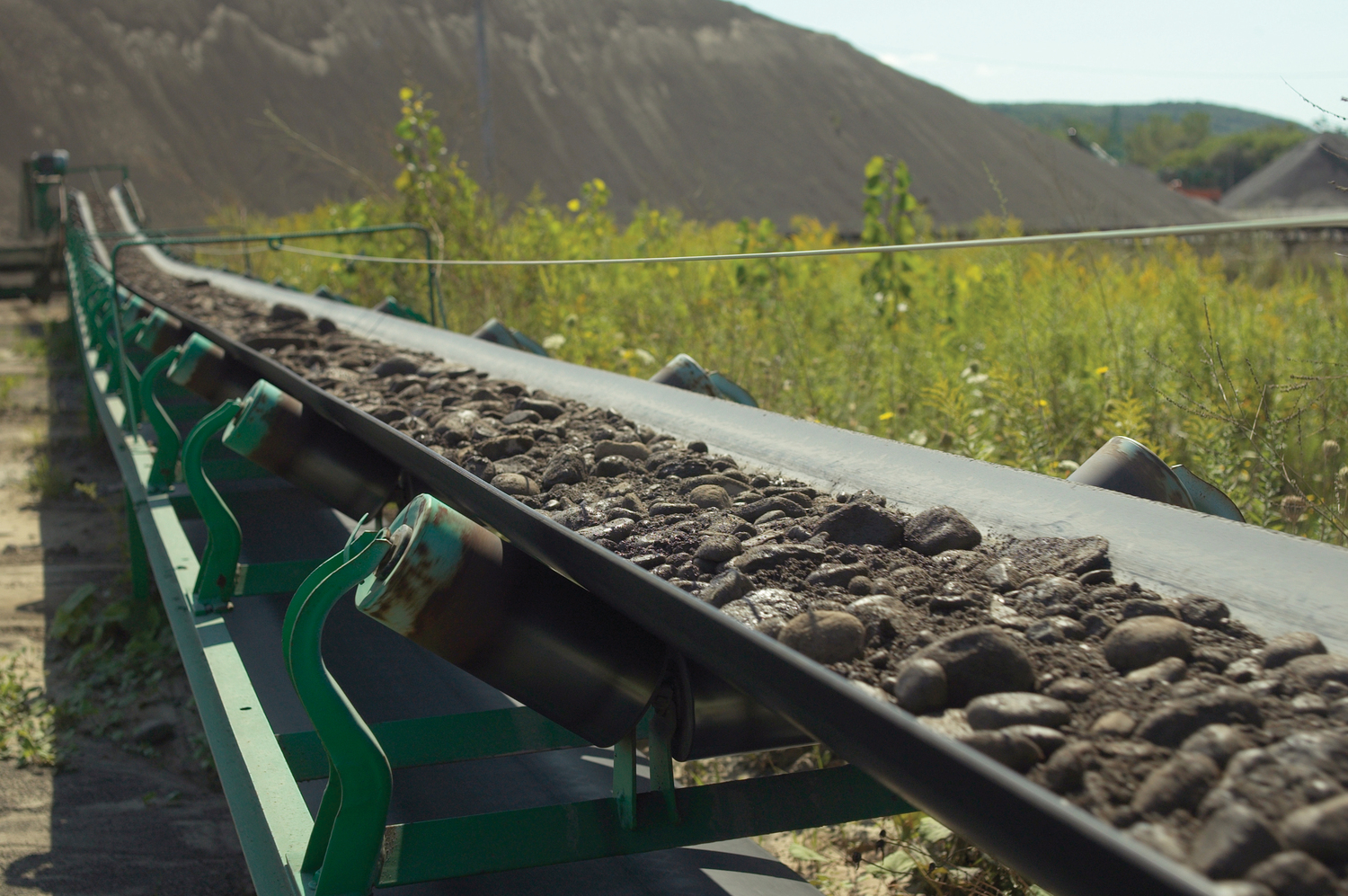Conveyor belts are made of elastomer and reinforced skeleton material, which is a key feature of belt conveyors. The development of the conveyor belt is inseparable from the improvement of the performance of the skeleton material, and its fracture strength, extension characteristics, elasticity, rigidity and toughness, dimensional stability are all closely related to the performance of the skeleton material. Therefore, the study of the properties of the skeleton material is extremely important.
The general requirements of the general conveyor belt for the skeleton material are as follows: have sufficient breaking strength, high modulus, elongation small; good adhesion with the elastomer; Today, the conveyor belt skeleton material is a variety of fiber fabrics, Its fabric. The choice of skeleton material begins with the requirements of the survey and the main data requirements, but also the need for skeleton material performance and performance with a profound correlation in order to achieve the best combination of technology and the economy. This article will discuss the above issues in more detail, but does not involve cord fabric, wire braid, steel and twisted fabric.
Increasing the modulus of nylon fibers has always been a matter of concern. It is said that the Stanyl nylon 46 developed by the Netherlands has the characteristics of good dimensional stability and low elongation at break. It has also been reported that a nylon-based monofilament cross section of Hyten is a “spherical flat” shaped fiber with high fineness, high breaking strength, high modulus, high energy absorption and low shrinkage. Its monofilament processing is simple, but also save the impregnation of the adhesive and calendered adhesive, used in the tire that the effect is very good, its superiority will also be in the conveyor belt in the surface of several nylon fiber performance comparison fracture strength / Break elongation intermediate elongation dry heat shrinkage melting point / project rate /% nylon ladder 46 66 monofilament Note: 1) Hyten nylon 66 monofilament stretched at 13.3cN ° tex1 strength, the rest are in the 47. 1 strength drop Stretch; 2) Hyten nylon 66 monofilament heating temperature is now, but not yet practical reports. The performance of several nylon fibers 1.3 polyester fiber (polyester) comparison see table ChhaAcad torn icoalElectronicPublishing polyester fiber breaking strength and elasticity with Jin / Lun fiber near. Net degree of 160 ° C, the rest of the heating temperature is 150, but the modulus is higher than the nylon fiber nearly 2 times. Polyester fiber fixed load elongation is small, good dimensional stability and more water. Polyester filament for the conveyor belt fabric skeleton of the material is very ideal. For conveyor belts that do not require a groove, the weft use of polyester fibers is equally suitable, which provides strong rigidity and support for the conveyor belt.
Available for the production of conveyor belt selection of domestic industrial polyester filament with ordinary type, high modulus low shrinkage type, low shrinkage type, ordinary activated type, low shrinkage activated type.
In addition to a large number of polyester filament used in the conveyor belt fabric, monofilament and short fiber has also been widely used. Polyester monofilament with a diameter of 0.2 to 0.4 mm is used as a weft of a plain weave to exert a special function: the use of high rigidity of the monofilament can force the warp to produce a high “shrinkage”. The light and medium conveyor belt made of this fabric has good flexibility in the running direction and can be used as a “tip conveyor” for small guide rollers and even sharp edges for food, tobacco and other industries. Because of the lateral rigidity of the conveyor belt, it is possible to prevent the deformed objects from being damaged during the conveyance and to keep the objects highly stable on the belt.
Post time: Oct-09-2021


